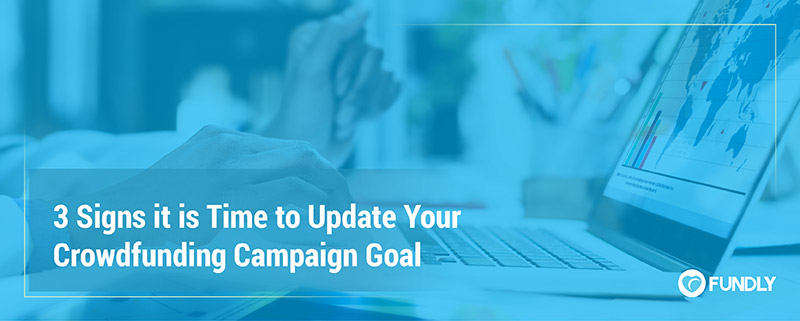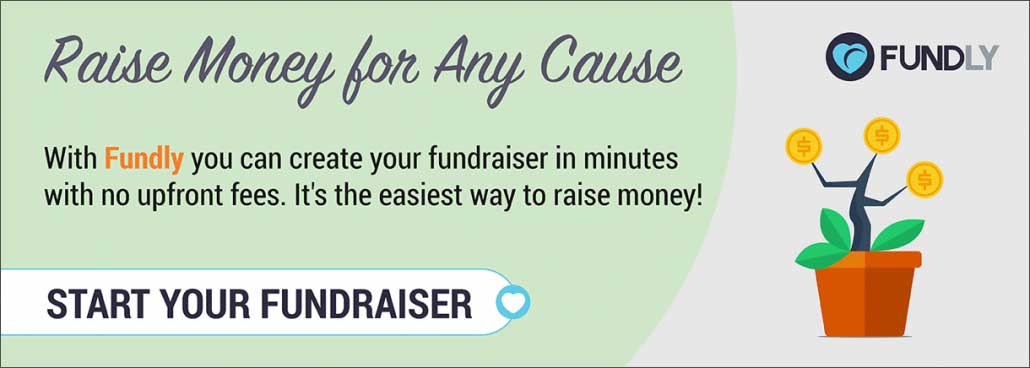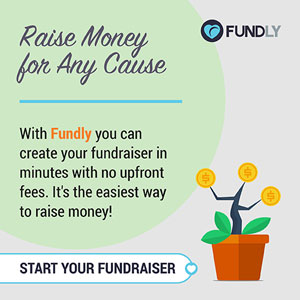3 Signs it is Time to Update Your Crowdfunding Campaign Goal
If you have been reading up about crowdfunding best practices, you’ve likely heard that you should consider increasing your goal part way through your campaign.
By making a smart and educated decision to raise your goal, you could significantly increase the amount of money you’re able to raise for your campaign.
Before you can make that money though, you have to make the choice to raise your fundraising target.
That’s a tough choice to make, and it’s an even tougher choice when you’re not sure what qualifies your campaign as “ready” for a goal update.
Lucky for you, we’re going to spend the next 10 minutes or so explaining exactly how to know when it is a good time to update your campaign.
We want you do consider three questions:
- Does my campaign still have momentum?
- Is it likely that I’ll reach my current goal?
- How far into my campaign timeline am I?
Based on your answers to those three questions, you’ll find out if a goal update is in your near future. Let’s take a look!
1. Does my campaign still have momentum?
As our article on the very subject of crowdfunding campaign momentum explains:
After kick-starting a crowdfunding campaign, most fundraising pages gain immediate attention. In fact, the most (and often the biggest) contributions are made early after a campaign’s creation. However, sometimes crowdfunding campaigns face a fundraising lull after the initial interest dies down. While the influx of attention and donations at the beginning can raise a lot of funds, it’s not always enough to reach your goal.
In other words, momentum doesn’t always last, and some campaigns lack the forward propulsion to go all the way.
You simply cannot raise your goal if your campaign doesn’t have momentum. That said, if your campaign is barreling along, raising your goal can actually add to the momentum.
So how do we quantify and judge your momentum? It is going to vary from campaign to campaign, but you’ll want to take a close look at your existing donations.
Consider the following factor — the current rate of giving versus your campaign’s most active period.
Essentially, figure out how many donations you’re averaging per day (or week), and then study how that average has changed over time. If you’re on a steady decline, your momentum is waning.
You don’t want to up your goal if you’re in a complete dry spell. And it’s best if you can increase your goal while your momentum is on an upward trajectory.
To throw a wrench into the equation, do keep in mind that this rule doesn’t always apply to late-timeline goal increases.
For example, say you set out to raise $15,000 over three months. In the first two months, you had a ton of success and raised $13,875. But the interest in your campaign faded in the final weeks, and now you only have 7 days left and minimal traction.
You’re within $1,500 of your goal, and you’ve proven that you can raise a significant amount in a short amount of time.
So, it might be worth it to update your goal to $15,500 or $16,000 and tell your supporters something like, “We’re so close to reaching the target that I decided to increase the goal. I know we can make it. We have a week left, are you in?”
In that instance, you can actually use a goal increase to reinvigorate the campaign.
Keep in mind that even though it’s good to use that example to demonstrate the dynamic relationship between campaign goals and campaign momentum, that is a special scenario and won’t be universally applicable.
Just Remember: Momentum is subjective, so you’ll want to perform a careful analysis of your specific campaign history to see if your campaign has momentum and is ready for a campaign goal increase.
2. Is it likely that I’ll be reaching my current crowdfunding goal?
Here’s another subjective question. While you never know when some anonymous donor will come along with a blank check to help you see your dreams come true, you can still make a realistic guess as to how likely it is that you’ll reach your first goal.
Again, you’ll want to analyze past and current campaign behavior.
First, ask yourself how your campaign has performed historically:
- How much have I raised so far?
- How quickly did I raise that money?
- How many donors have contributed so far?
That final question about donors will be key. A high number of donors is a good sign. If you’ve received $5,000 from 50 donors, that’s a better sign for your future campaign potential than $5,000 from 10 major donors.
While a gift of any size is welcome and a major gift is an awesome contribution, low quantities of larger gifts don’t necessarily indicate that you’ll be receiving more donations of that nature. There are only so many people in your network who will be willing and able to give such large gifts.
Once you understand your campaign history, take a look at its present:
- How often is it being shared?
- How many donations are you bringing in?
- Are existing donors still engaged with your cause?
If you campaign’s past and present are positive and in alignment, there’s a good chance your campaign’s future will follow suit, and vice versa.
Just Remember: Take a good hard look at the feasibility of reaching your current goal, and if you are confident you’ll surpass it, it is time to raise your target.
3. How far into my campaign timeline am I?
This question is fairly straightforward, and we won’t spend too much time on it, but you need to consider your campaign deadline.
Your finish date is actually a great incentive to inspire immediate giving, so it is something that you can and should be leveraging.
However, even if you have a ton of momentum, if you’ve only raised $5,000 in five months and you’re trying to get to $10,000 in two weeks, you shouldn’t raise your goal.
You can, though, consider a short deadline extension and goal increase if you’re right around your goal in the final days. Like the example from earlier, you’d simply update supporters that you’ve increased the goal and deadline (with specifics) and encourage everyone to join in on the final push.
Just Remember: Unless you have an event you’re leading up to, the timeline doesn’t need to be fixed. Let your campaign response dictate how you pace your fundraising and goal setting.
So, how did answering these questions go? The decision to update your goal should be made holistically. In other words, while we recommend using these questions as guideposts, they shouldn’t be hard and fast rules.
Trust your gut and what the behavior of your supporters is telling you. You know your campaign better than anyone!
If you want to continue to learn about crowdfunding goals and related fundraising strategies, check out this list of additional resources:
- Peer-to-Peer Fundraising: A Nonprofit’s Guide — Want to increase your chances of reaching your goal? You can activate the “team fundraising” option for your crowdfunding campaign and have more people fundraise for your cause. Get the scoop on team, or peer-to-peer fundraising, with this guide.
- Crowdfunding 101: Raising Money and Awareness Online — If you’re looking for even more crowdfunding-related advice, look no further than our comprehensive crowdfunding guide.
- 3 Crowdfunding Social Media Templates (To Raise More Money!) — Sharing your campaign over social media is a proven method for reaching your current and new crowdfunding goals, so take some advice from this article and its pre-written templates.









